SDG 9 focuses on the development of sustainable and resilient infrastructure and industries, including small-scale enterprises. It encourages scientific research and the upgrade of the technological capabilities of industries. Access to information and communications technology and affordable Internet access are included. The goal has 5 general targets and 3 means of compliance targets. There are 12 indicators.
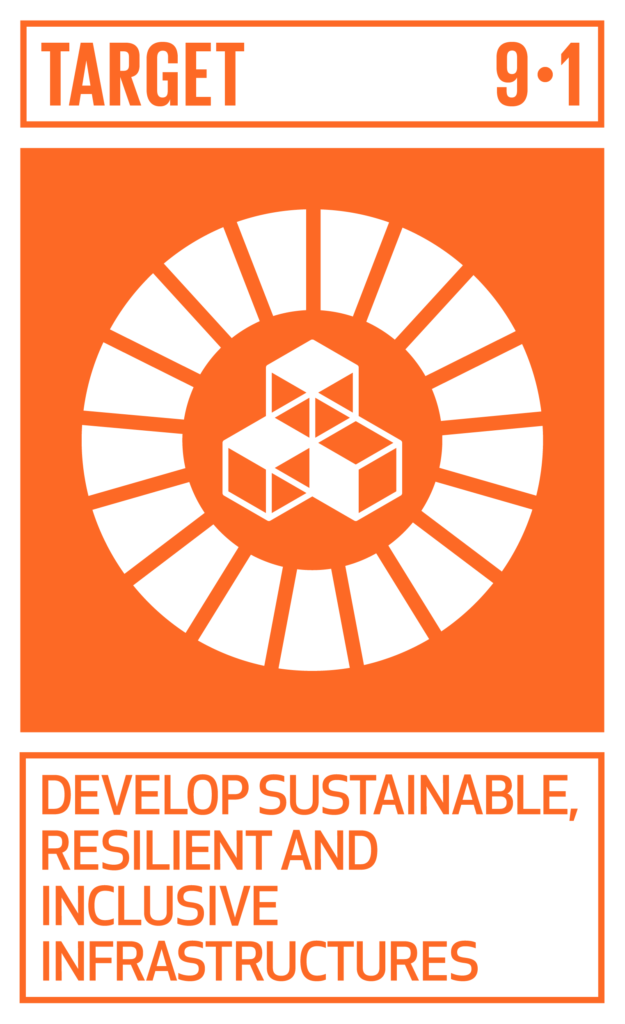 | 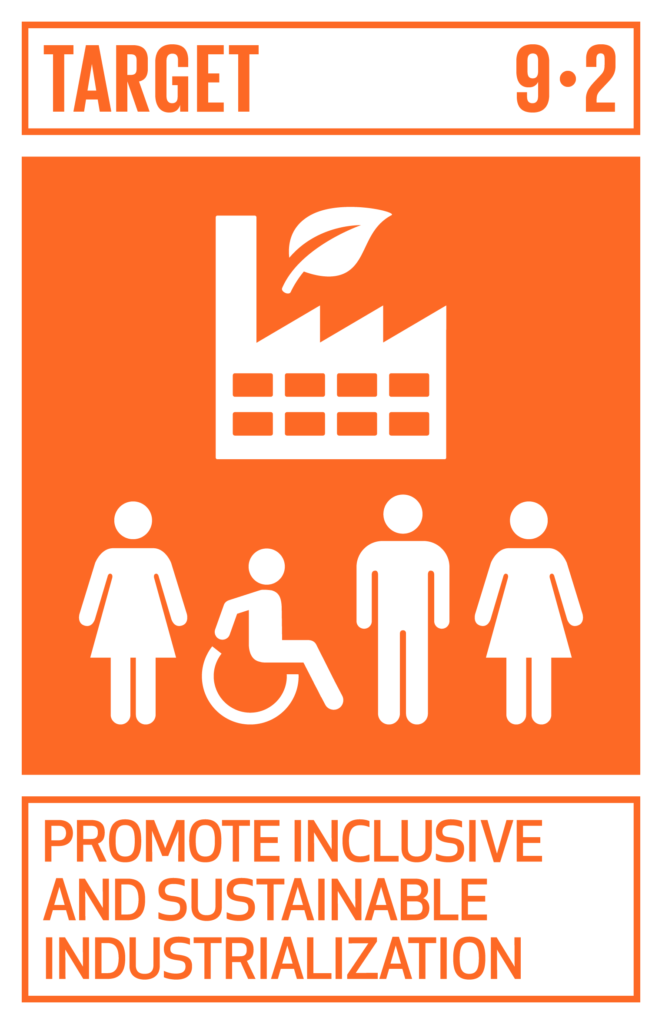 | 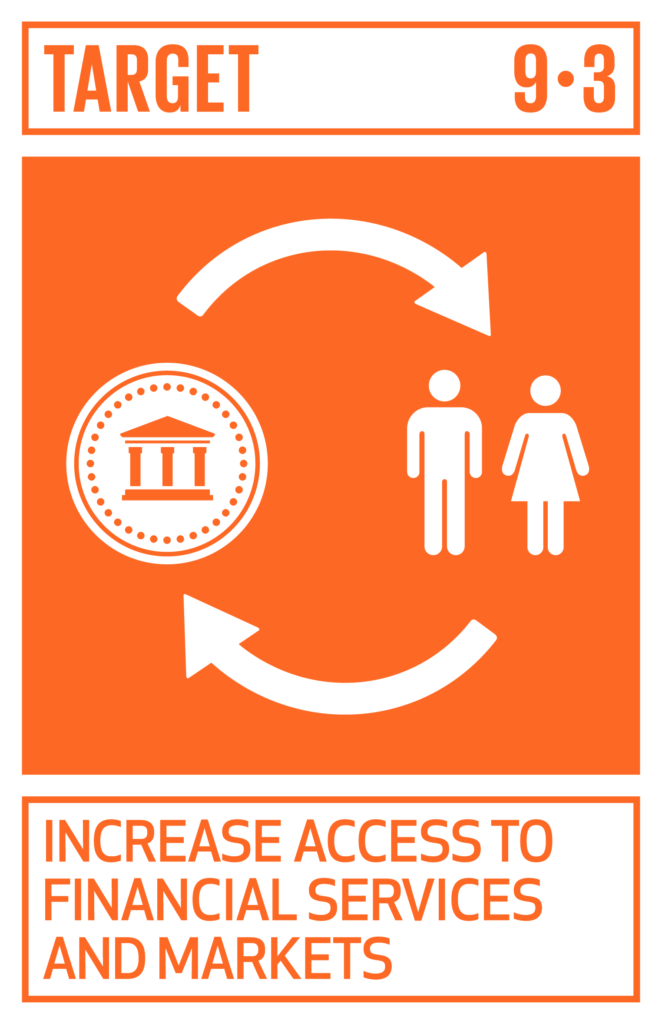 |  |
 | 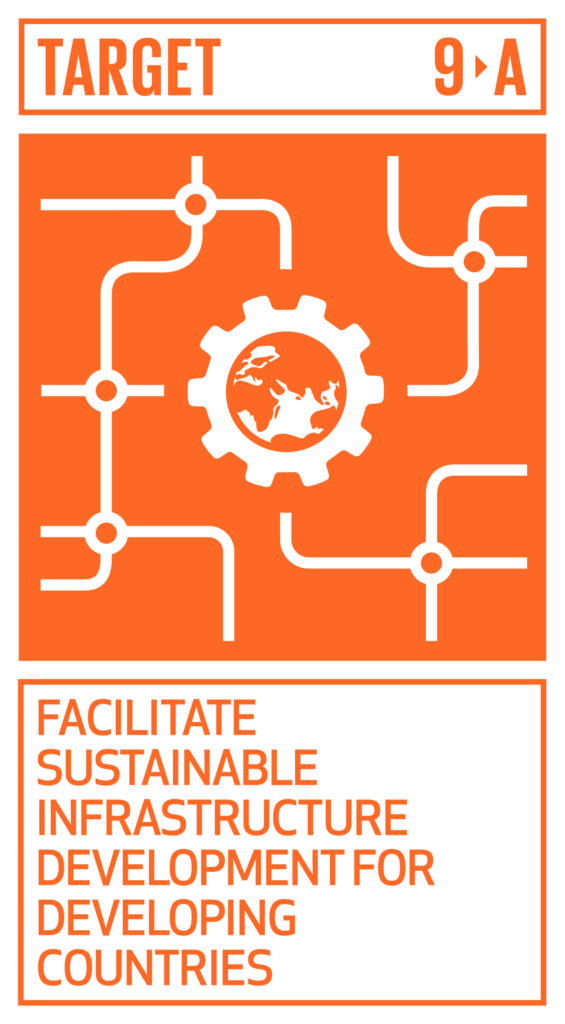 | 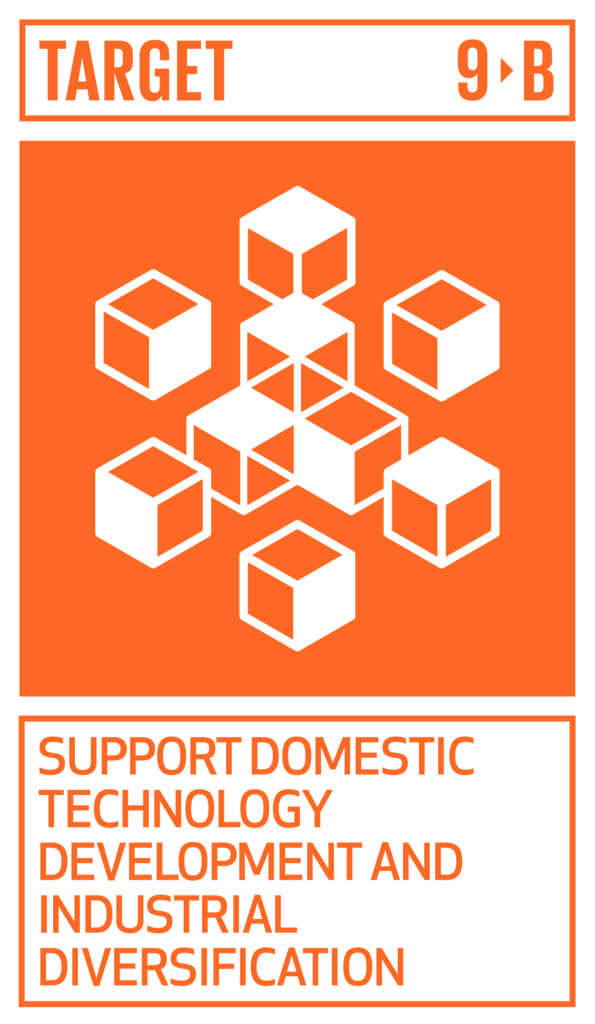 | 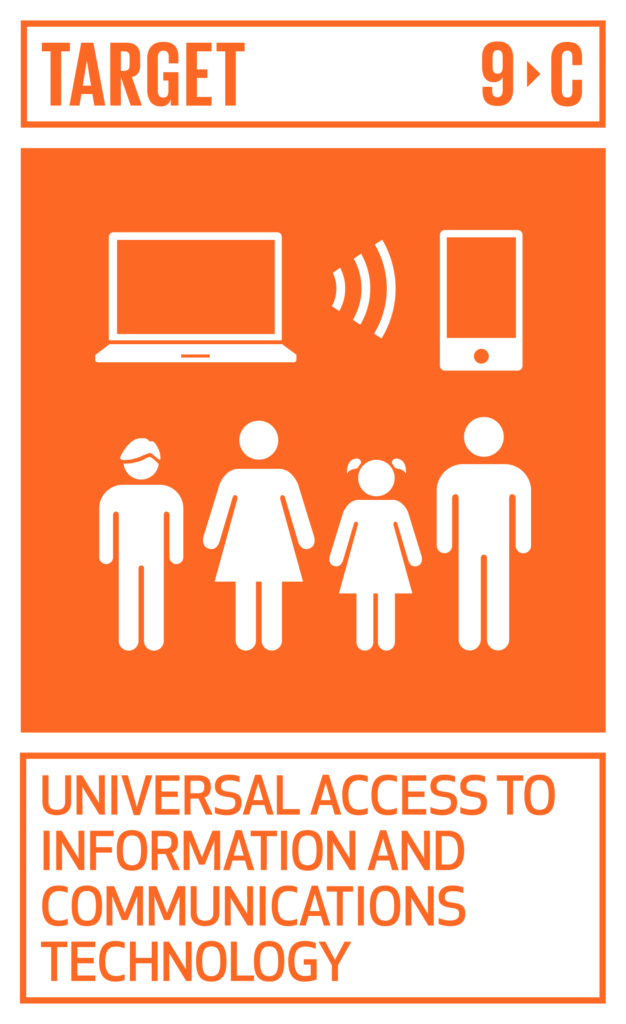 |
Transition from the MDG targets to SDG 9 in Cambodia
None of the earlier Millennium Development Goal targets are a close match for SDG 9’s targets around infrastructure/industrialization. The SDG 9 targets are completely new, rather than a reworking of older MDG targets or unfinished business.
Cambodia’s localized Goal, CSDG 9 aims to bring to life and advance Cambodia’s industries. The vision to transform and modernize the industrial sector from a labor intensive industry to a skill-driven industry by 2025 is detailed in the Industrial Development Plan (IDP) of the Royal Government of Cambodia (RGC). The RGC has set a strategy to bring Cambodia into a middle-income economy by 2030 and high-income country by 2050 through the National Strategic Development Plan. The key driver to future growth is the role of industry and small and medium enterprises (SMEs).1 This vision looks to successfully connect the regional to the global value chain, developing interconnected production clusters as well as integrating regional production into international networks. The success of this goal will contribute to national economic development, sustainable and inclusive high economic growth, employment creation, increased value added to the economy and increased income for the Cambodian people.2 The World Bank found in a May 2019 report that Cambodia’s economy performed better than expected in 2018. Growth for 2018 was 7.5%, a four-year high, compared to 7% in 2017. This economic growth, the highest in the region, is primarily due to the rapid expansion of exports and a surge in Foreign Direct Investment (FDI).3
Manufacturing
Cambodian industries remain weak due to having a narrow base, low level of technological sophistication, low value segmentation and concentration in a few sectors, such as garments and food processing. Cambodia’s light manufacturing assembly sector, located primarily but not exclusively in special economic zones, covers principally labor-intensive operations. The production of construction materials, electronics, machinery, engines, and chemical products is still small.4 The manufacturing sector accounted for 31% of Cambodia’s economy in 2016.5 The country’s growth rate for value added in industry is the highest in Southeast Asia.6The Asian Development Bank has forecast the country’s manufacturing to continue to grow by around 9.6%, “with a slowdown in garments and footwear off set by stronger growth in emerging industries: electrical parts, automobile components, bicycles, milled rice, and rubber”.7 In 2017, Cambodia became the European Union’s number one supplier of bicycles.8
There were 1,528 factories in Cambodia at the end of 2018 according to figures from the Ministry of Industry and Handicraft, with 922 – almost two-thirds – operated by weaving, bag, garment, and footwear manufacturers.9 2018 saw 178 new factories opening, compared to 150 in 2017. Total income from production of both domestic and export products was about US$13.17 billion in 2018 – an increase of 23% from 2017. More than 63% of large manufacturing enterprises are in the form of foreign direct investment and export-oriented. 68% of large manufacturing enterprises are located in Phnom Penh and 13% in Kandal province.10
Investment by RGC, development partners, and private sector has continued to target infrastructure: roads, rail, bridges, ports, hydropower, solar farms, power transmission lines and irrigation systems. This has helped garment factories to shift from the capital to rural areas, enabling workers to work closer to home and relieving congestion and burden on urban infrastructure. The garment sector employed about 635,000 workers in 2017 at 643 factories.11 Around 90% of the workforce is female.12 Exports totalled US$8.02 billion in 2017 (up 9.5% from 2016), and made up 72% of Cambodia’s total merchandise exports.13 Footwear exports grew by 14.4% year-on-year, to US$873 million for 2017.
Beyond garment and footwear
Opportunities for other national industries exist. Diversifying the industrial base, away from low-skill garment manufacturing and food processing is urgent for growth and continuous development into higher technologies. The government prepared and adopted the IDP in March 2015 as a guide to provide systemic solutions to developing a competitive industrial sector in Cambodia.14 A key aim of the IDP is driving economic diversification beyond garment and footwear manufacturing. The target was for these dominant products to fall to 55% of total exports by 2020 and 50% by 2025.15
The localization of SDG 9 in Cambodia
The Cambodian Strategic Development Goal 9 has picked up 5 of the 8 targets and 7 of the 12 indicators from the global goal (Table 1).
Table 1 CSDG 9 Targets and indicators16
CSDG Target | Indicators | Unit | Baseline (2015) | 2020 | 2025 | 2030 | Monitored |
9.1 Develop quality, reliable, sustainable and resilient infrastructure, including regional and trans-border infrastructure, to support economic development and human well-being, with a focus on affordable and equitable access for all. | 9.1.1 Annual freight volumes of ports |
|
|
|
|
| Annually |
Sihanoukville Autonomous Port (1000 tons) | 1000 Tonnes |
| 4,971 |
|
|
| |
Phnom Penh Autonomus Port (1000 tons) | 1000 Tonnes |
| 2,930 |
|
|
| |
9.1.2 Numbers of air passengers (Domestic and international) | Person | 6,042,484 | 9,842,181 | 16,250,190 | 26,969,633 | Annually | |
Domestic Fly | Person | 436,167 | 461,992 | 515,097 | 574,306 |
| |
International Fly | Person | 5,606,317 | 9,380,189 | 15,735,093 | 26,395,327 |
| |
9.1.3 Freight weight (Domestic and International) | Ton | 37,150 | 84,803 | 180,291 | 383,526 | Annually | |
Domestic Freight weight | Ton | 252 | 86 | 41 | 20 |
| |
International Freight weight | Ton | 36,898 | 84,718 | 180,249 | 383,506 |
| |
9.2 Promote inclusive and sustainable industrialization and, by 2030, significantly raise industry’s share of employment and gross domestic product, in line with national circumstances, and double its share in least development countries | 9.2.1 Number of Cambodian employees in manufacturing sector as a proportion to total employment within the country | % | 10 | 15 | 20 | 25 | Annually |
9.5 Enhance scientific research, upgrade the technological capabilities in all countries, in particular developing countries, including, by 2030, encouraging innovation and substantially increasing the number of research and development workers per 1 million people and public and private research and development spending | 9.5.1 Research and development expenditure as a proportion of GDP | % | 0.12 | 0.20 | 1.00 |
| 5 years |
9.a Facilitate sustainable and resilient infrastructure development in developing countries through enhanced financial, technological and technical support to African countries, least developed countries, landlocked developing countries and small island developing States | 9.a.1 Total official international support (official development assistance plus other official flows) to infrastructure | % of GDP | 1.65 | 1.25 | 0.91 | 0.68 | Annually |
9.c Significantly increase access to information and communications technology and strive to provide universal and affordable access to the Internet in Cambodia by 2020 | 9.c.1 Proportion of population covered by internet (mobile and fixed) | % | 135.35 | 122.90 | 129.17 | 135.76 | Annually |
Closing the gap on formal and informal work is another key feature. Informal enterprises need to be brought into the formal business; creating and strengthening an entrepreneurial culture that veers away from low-value added and low-level technology is what the IDP envisions. Most informal enterprises are family-based and unable to make the necessary changes and achieve the kind of capacity building necessary to participate in the international market.17
Cambodia has continued to receive large volume of foreign direct investment (FDI), primarily focusing on real estate and tourism development in the past few years.18 The growth of Chinese tourism and investment is having a significant impact on Sihanoukville and the wider coastline of Cambodia. It was reported that just in the first week of November 2018, the Council for the Development of Cambodia approved five, 5-star hotel projects with a total of 3,000 rooms.19
The World Bank stated in October 2017 that tourism contributed 28.3% of Cambodia’s GDP and 25.9% of employment.20 According to the Ministry of Tourism, over ten years domestic tourist numbers doubled in 2016 at an estimated 10 million.21 During this decade, the nationality of foreigners visiting Cambodia has shifted dramatically. While western countries were the top markets for foreign tourism in the early 2000s, they are being overshadowed by tourists from China, Vietnam and other Asian countries. Over 1.2 million Chinese visitors arrived in 2017, an increase of 46% from the previous year.22 Three-quarters of international tourists today come from the Asia/Pacific region, with only 15 percent from Europe.23
Connectivity lacking in rural areas
The proportion of the population with internet access, especially through mobile phones, has increased remarkably in the past few years, especially in rural areas as the telecom infrastructure has been expanded quite rapidly. In most of the rural areas, people can use 3G or 4G services on their smartphones. RGC has promoted the connectivity of backbone fiber optic cables, which have increased to 43,410 km in 2018 along with two undersea optic cable networks. The use of information and communications technology (ICT) has risen substantially as reflected in the rise in mobile phone users from 2.7 million in 2012 to 11 million in 2018.24 The private sector has and will invest in ICT infrastructure and services where there is a strong business case and where profits can be made. However, the area where capacity is most still lacking is in rural and remote areas, especially high-speed Internet access.25
In such cases, RGC will deploy policy and regulatory frameworks to ensure affordable access and connectivity. Particularly, the Sub-Decree on Mechanism on implementation of Universal Service Obligation issued in 2017 is considered as an important tool to boost the connectivity to all corners of the country. This involves a globally mechanism for bridging the digital divide gap, especially in those areas that are not economically viable to build telecommunication infrastructure or the private sector has no interest. It aims to deliver universal digital access.26
Turning point for SMEs
Cambodia is still faced with many challenges, including:
- high logistics costs
- relatively weak institutional coordination
- a lack of coherent quality infrastructure, limiting producers’ access to markets and enterprises’ choice of locations across the country
- a lack of energy development, skill development, and technologies, including digital technologies, constraining growth of the manufacturing sub sector
- inadequate capacity to implement the IDP.27
In July 2017, the World Bank announced it will provide Cambodia with US$540 million over 2018–2021 to finance economic development, with a particular focus on supporting the implementation of the Industrial Development Policy.28 A package of 17 reform measures aimed at improving Cambodia’s competitiveness, promoting SMEs and attracting foreign direct investment, was presented by the Prime Minister of Cambodia in March 2019 at the Government Private Sector Forum. This includes a focus on reducing logistics costs, lowering electricity tariffs, improving labor law, and increasing financial access to SMEs. All with the aim to generate industry growth.
The Ministry of Industry & Handicraft has drafted the Five-Year SME Development Plan expected to launch in early 2020 to reform SMEs. The Five-Year SME Development Plan will bring together ASEAN sectoral bodies and Industrial Development Policy (IDP) forces to create a competitive and innovative MSME culture through the implementation of the Strategic Action Plan on SME Development.29
In addition, the Skills Development Fund (SDF) was set up in 2018 to focus on five priority areas: manufacturing, construction, ICT, electronics, and tourism with an aim to bridge the skills gaps in the Cambodian economy. In the same year, RGC issued a Sub-decree to provide tax break to SMEs for up to 5 years. SME Bank and Entrepreneurship Development Fund and Entrepreneurship Promotion Centre have been created by the Ministry of Economy and Finance and are expected to be up and running in 2019.30
The Royal Government of Cambodia (RGC) has outlined the following objectives for the CSDG 9 which are to be accomplished by the year 2030.31
- Promote Inclusive and sustainable industrialization and significantly raise industry’s share of employment and gross domestic product
- Enhance scientific research, upgrade the technological capabilities of industrial sectors encouraging innovation and substantially increasing the number of research and development workers per 1 million people and public and private research and development spending
- Facilitate sustainable and resilient infrastructure development through enhanced financial, technological and technical support
- Significantly increase access to information and communications technology and strive to provide universal and affordable access to the internet in Cambodia by 2020.
Related Topics
References
- 1. Ministry of Planning. “National Strategic Development Plan 2014-2018.” Accessed 20 November 2019.
- 2. Council of Ministers. “Cambodia Industrial Development Policy 2015-2025”. Accessed 20 November 2019.
- 3. World Bank 2019. “Cambodia Economic Update May 2019”. Accessed on 20 November 2019.
- 4. “Cambodia Now EU’s Leading Bicycle Supplier”. Bike Europe, 25 June 2018. Accessed on 20 November 2019.
- 5. Asian Development Bank 2018. “Asian Development Outlook 2018: How Technology Affects Jobs.” ADB, April 2018. Accessed 20 November 2019.
- 6. Ibid.
- 7. Ibid.
- 8. “Cambodia Now EU’s Leading Bicycle Supplier”. Bike Europe, 25 June 2018. Accessed on 20 November 2019.
- 9. Ministry of Information 2019. “Higher Number of Factories Opened In 2018”, 17 January 2019. Accessed 20 November 2019.
- 10. Council of Ministers. “Cambodia Industrial Development Policy 2015-2025”. Approved 06 March 2015. Accessed 20 November 2019.
- 11. ILO June 2018. “Cambodian Garment and Footwear Sector Bulletin Issue 7“. Accessed 20 November 2019.
- 12. OECD 2018. “SME Policy Index: ASEAN 2018“. Accessed 20 November 2019.
- 13. ILO June 2018.
- 14. Council of Ministers. “Cambodia Industrial Development Policy 2015–2025.” Accessed 20 November 2019.
- 15. World Bank April 2018. “Cambodia Economic Update – Recent Economic Developments and Outlook“. Accessed 20 November 2019.
- 16. Royal Government of Cambodia 2018. “Cambodian Sustainable Development Goals (CSDGs) Framework (2016-2030)”. Accessed 20 November 2019.
- 17. Council of Ministers. “Cambodia Industrial Development Policy 2015–2025.” Accessed 20 November 2019.
- 18. Royal Government of Cambodia 2019. “Cambodia’s Voluntary National Review 2019”. Accessed on 20 November 2019.
- 19. Construction & Property 2019. “Sihanoukville seeing an influx of 5-star hotel investment.” Accessed 20 November 2019.
- 20. World Bank October 2017. “World Bank East Asia and Pacific Economic Update October 2017.” The World Bank, Washington D.C. Accessed 20 November 2019.
- 21. Hang Sokunthea, 2016. “Domestic Tourism Nearly Doubles in 10 Years”, The Cambodia Daily, 29 December 2016.
- 22. World Bank April 2018. “Cambodia Economic Update – Recent Economic Developments and Outlook.” Accessed 20 November 2019.
- 23. Ibid.
- 24. Royal Government of Cambodia 2018. “Rectangular Strategy-Phase IV”. Accessed on 20 November 2019.
- 25. Royal Government of Cambodia 2019. “Cambodia’s Voluntary National Review 2019”. Accessed on 20 November 2019.
- 26. Ibid.
- 27. Ibid.
- 28. May Kunmakara 2017. “World Bank Commits $540 million to Cambodia”, Khmer Times, 20 July 2017.
- 29. Royal Government of Cambodia 2019. “Cambodia’s Voluntary National Review 2019”. Accessed on 20 November 2019.
- 30. Ibid.
- 31. Royal Government of Cambodia 2018. “Cambodian Sustainable Development Goals (CSDGs) Framework (2016-2030)”. Accessed 20 November 2019.

